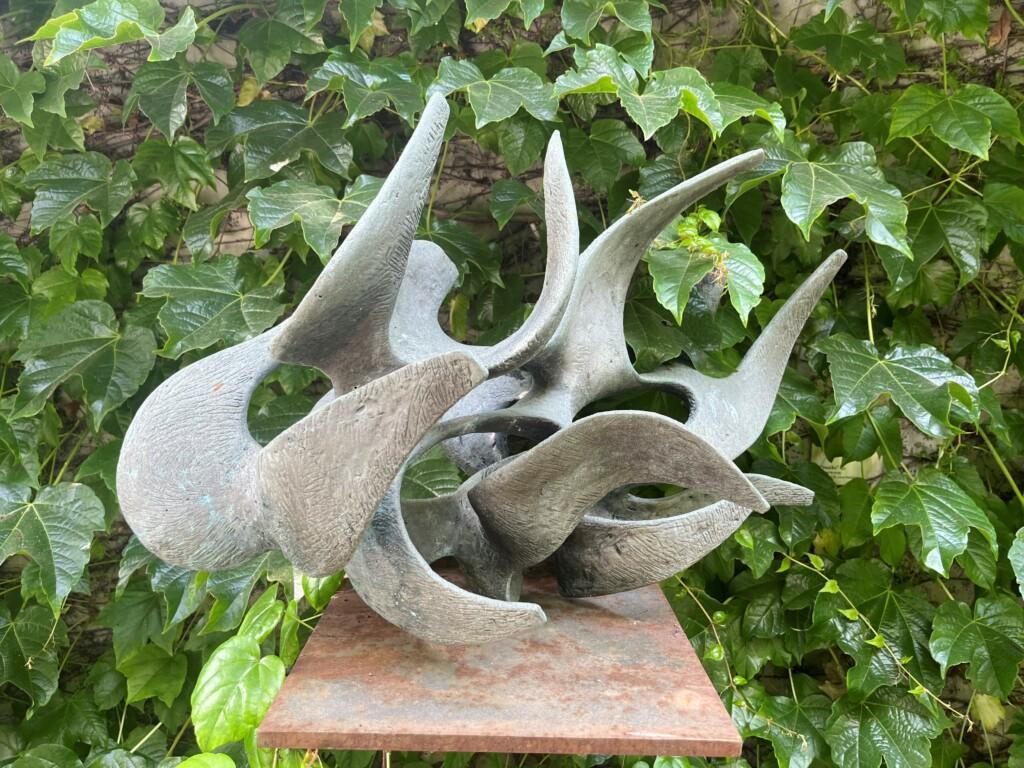TIOH Art Tour: Feniks 1971
- By Nandor Glid
- 1971, Belgrade, Yugoslavia
- Cast Bronze
- Gift of Leon and Sally Naiditch
Deported during the Second World War, young Nandor Glid was sent to a work camp in Hungary while his family perished in Auschwitz. Glid later escaped the camp and fought with the Yugoslav partisans, helping the Russians drive the Germans from what then became Yugoslavia, modern day Serbia. After the war, Glid studied sculpture at the Academy of Applied Arts in Belgrade. Throughout his life, he won numerous awards in recognition for his highly expressive sculptures and graphics. Glid’s most recognizable and renowned work is the International Monument, which was picked from competitive entries to provide a memorial for the victims of the Dachau concentration camp. It sits today at the entrance of the camp.

A talented sculptor, sketcher, and graphic artist, Glid continued to produce highly recognizable and expressive sculptures to be installed around the globe until his death in 1997. His final work was commissioned by the central board of Jewish communities in Greece and dedicated to Jewish Holocaust victims by the President of Greece in 1997. Glid was able to complete designs for the project, but passed away before he could begin the execution of the monument. Based on these plans, his son Daniel completed the bronze sculpture, and it is now located near the pre-World War II Jewish corner of Salonika, Greece, an area that lost 96% of its Jewish population during the war.
This cast bronze piece, Feniks 1971, is a representation of the mythological bird that rises to new life flying out of the ashes of the flames in which it was itself consumed. It bears a strong thematic and technical resemblance to much of his work, such as the monumental burning menorah in Dorćol, Serbia and in a style that is uniquely his. This piece is a stark and vivid reference not only to his own life, but to that of the Jewish community and Eastern European civilization recovering from the horror of the Shoah. Many of Glid’s monuments are scattered throughout former Yugoslavia. Glid’s works are loud, tremendous, and expressive, filled with pain and anguish and commanding the viewer to experience the work from his perspective. This piece, while evoking a strong emotional response, is unique in that it sheds a light of hope emanating from the heart of the artist.
Home